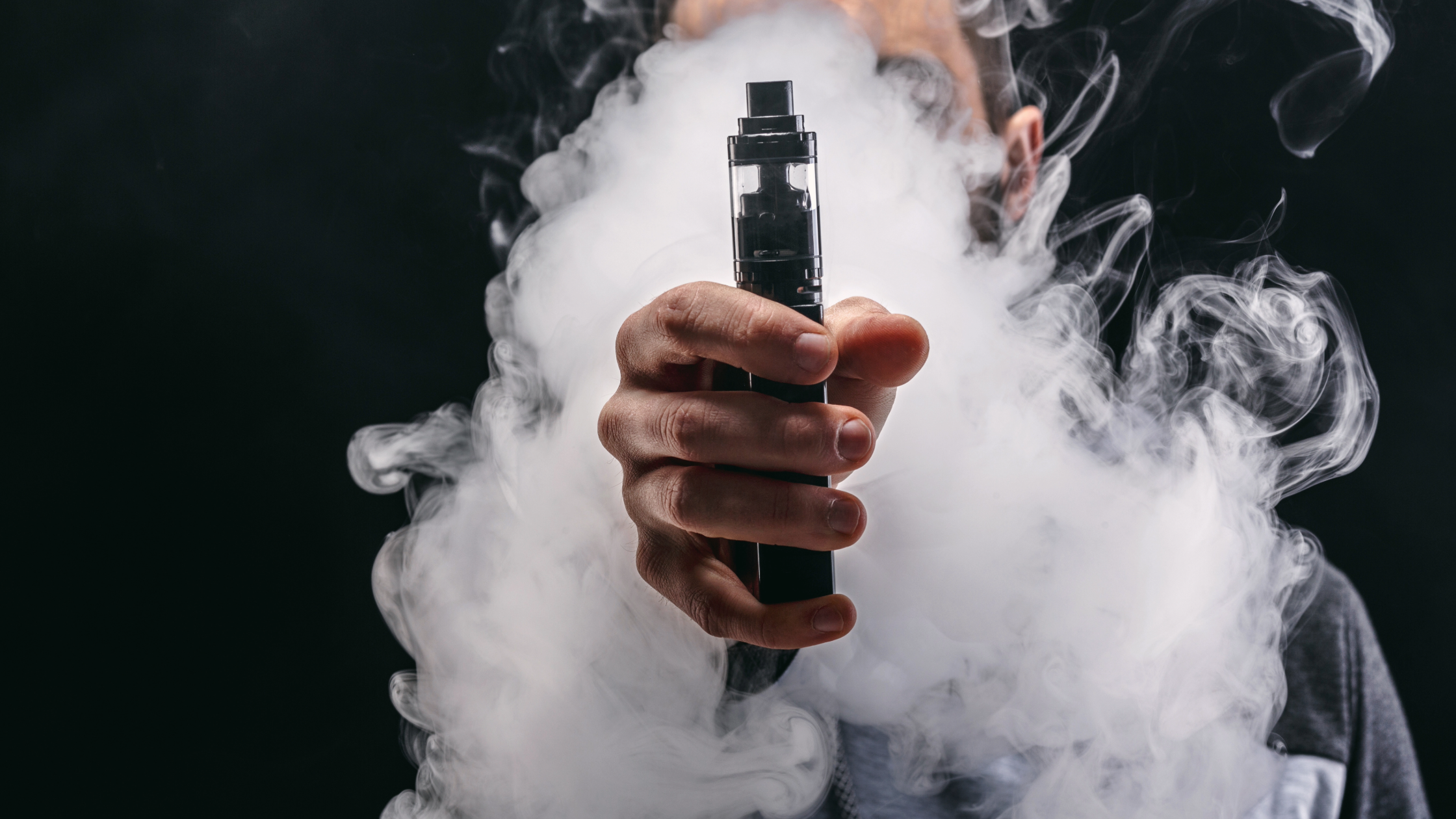Hey there, fellow flavor aficionados and cloud connoisseurs! Today we’re talking about nicotine. Specifically, we’re putting nicotine from traditional tobacco cigarettes head-to-head with the nicotine found in your favorite e-liquids.
It’s time to find out if all nicotine is created equal, or if your vape juice is playing a slightly different tune than a classic cigarette. Prepare yourselves —we’re about to get granular!
🧪 Chemical Cousins: Same Molecule, Different Delivery
Let’s start with a foundational truth: chemically speaking, nicotine is nicotine. The molecule—𝐶10𝐻14𝑁2—is the same whether it’s extracted from a sun-cured tobacco leaf or synthesized for an e-liquid. It’s the primary addictive agent in both products, acting as a stimulant that binds to receptors in the brain to produce that familiar “hit” and sense of satisfaction.
But here’s where the fun begins. While the core ingredient is identical, it’s in packaging and delivery systems where these two giants diverge, creating dramatically different experiences and overall chemical exposures. Think of it like this: nicotine is the star of the show, but tobacco and vaping are two wildly different stages.
🔥 The Combustion Conundrum: Tobacco’s Harsh Reality
When you light up a traditional cigarette, you’re engaging in combustion—literally setting plant matter on fire. This process isn’t just about releasing nicotine; it’s a chemical catastrophe.
- The Problem with Burning: A single lit cigarette unleashes a cocktail of over 7,000 chemicals, many of which are harmful or toxic, including tar and carbon monoxide. The nicotine itself is delivered within this complex, fiery mix.
- Form of Nicotine: Nicotine in a cigarette often exists in a freebase form, which is readily absorbed. Crucially, the harsh, acidic nature of the smoke helps convert some of the nicotine into a form that’s even more rapidly absorbed, contributing to that intense, near-instantaneous “rush.”
- The ‘Nicotine Spike’: Due to the rapid delivery and deep lung absorption of smoke particles, a cigarette typically causes a fast, high spike in blood nicotine concentration, reaching the brain within seconds. This rapid-fire delivery is a huge driver of the addiction and the short time between cravings.
In short, with traditional tobacco, you get your nicotine, but you also get a massive side of baggage that includes carcinogens and thousands of other combustion byproducts.

💨 The Vaping Variable: Aerosol Over Ash
E-cigarettes, on the other hand, operate on a completely different principle: aerosolization. There is no fire, no ash, and no combustion. Instead, an e-liquid (usually a blend of propylene glycol, vegetable glycerin, flavorings, and nicotine) is heated by a coil to create an inhalable aerosol (which is what we commonly, though technically incorrectly, call “vapor”).
- Purity of the Delivery Vehicle: Since you’re heating a liquid instead of burning a leaf, the toxic chemical load is vastly reduced compared to cigarette smoke. While not harmless (vaping aerosol contains its own set of chemicals and tiny particles), public health bodies often conclude that it exposes users to significantly fewer toxic substances than traditional smoking.
- The Nicotine Salt Revolution: A major development in e-liquids is the use of nicotine salts (often abbreviated as “nic salts”), especially in modern pod systems. Nicotine in its freebase form can be harsh at high concentrations. Nicotine salts, however, are created by treating freebase nicotine with a mild acid (like benzoic acid). This process allows for:
- Higher Concentration, Smoother Draw: Nic salts deliver higher levels of nicotine without the throat irritation (the “throat hit”) of freebase nicotine, making high-strength options much easier to inhale.
- Faster, More Efficient Absorption: Nic salts have been shown to deliver nicotine to the bloodstream at a rate closer to that of a traditional cigarette, appealing strongly to those transitioning from smoking.
- The Adjustable Dose Advantage: This is where vaping truly shines. E-liquids come in a vast range of nicotine strengths—from 0mg all the way up to 50mg or more (depending on local regulations). This allows users to titrate their nicotine intake, meaning they can gradually step down their concentration over time, giving them a level of control that a cigarette simply doesn’t offer.
⚡️ The Pharmacokinetics Face-Off (or, How Fast Does It Hit?)
Pharmacokinetics is just a fancy word for what the body does to a substance—how quickly it’s absorbed, where it goes, and how it’s eliminated. While the immediate, high-speed rush of a cigarette used to be unmatched, modern vape devices, particularly those utilizing nic salts, have closed that gap significantly. For many ex-smokers, the ability of a good pod system to mimic the nicotine satisfaction of a cigarette is key to a successful switch.
✨ The Takeaway: It’s All About the Vehicle
The verdict? The nicotine molecule itself is a consistent player across both systems. The major difference is the vehicle it travels in.
- Tobacco: Nicotine is delivered via a complex chemical structure created by fire, leading to rapid absorption, a massive toxin load, and an incredibly sharp, immediate habit.
- Vaping: Nicotine is delivered via an aerosol, with a vastly simpler chemical profile, controllable strength levels, and an absorption rate that can be customized or optimized (especially with nic salts) to meet the user’s needs.

For those of you looking to manage your nicotine intake, seeking a different kind of sensation, or simply wanting to explore a world of flavor without the smoke, the e-cigarette’s adjustable, combustion-free delivery system offers a level of control and choice that traditional tobacco simply can’t compete with.
Stop by your local World of Smoke and Vape. Our expert team is always here to chat about the latest devices, the perfect e-liquid strength to match your needs, and all the exciting nuances of the nicotine world.

